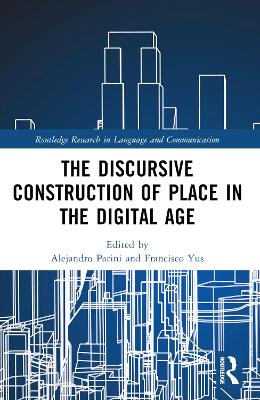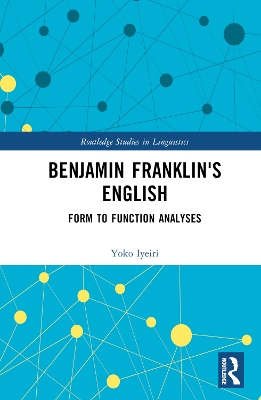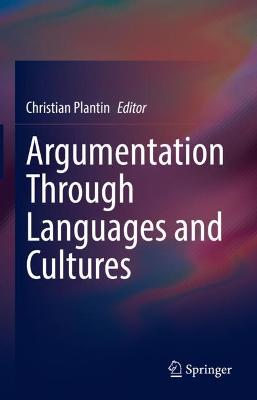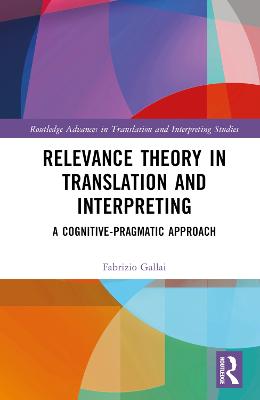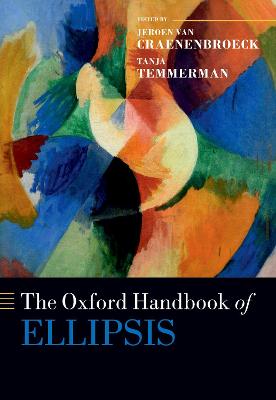Characterising Irony
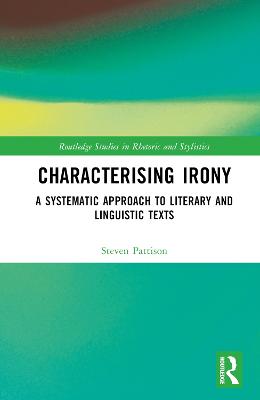 portes grátis
portes grátis
Characterising Irony
A Systematic Approach to Literary and Linguistic Texts
Pattison, Steven
Taylor & Francis Ltd
11/2022
252
Dura
Inglês
9781032023540
15 a 20 dias
648
Descrição não disponível.
Contents
List of figures
List of tables
1 Defining irony
Some important considerations in differentiating verbal irony from its derivatives
Differentiating ironies
Summary and overview of the book
2 What is irony?
Defining irony
The traditional rhetoric view of irony
Literary works on irony
Pragmatics accounts of irony
Other notable accounts of irony
Summary
3 Characterising ironies
Selection of irony candidates for the database
Prototypes
Methods for establishing prototypical irony
Applying the prototypical attributes of irony
Initial selection of central ironies for testing
Summary
4 Pilot database analysis of central ironies
Overview of database analysis of central irony attributes
Analysis of opposition
Results from the analysis of opposition
Results from the analysis of Context Compatibility
Results from the analysis of Polarity
Results of an analysis of the Function Attribute
Results of an analysis of the Assertion Attribute
Results of an analysis of the Participation Attribute
Results of an analysis of the Target Attribute
Results of an analysis of the Signal Attribute
Evaluating the Accessibility Attribute
Simple analysis of three central ironies
Summary and conclusions
5 Towards a systematic and precise analysis of irony candidates
Use of Levinson's Q-, I- and M-principles
Use of Possible Worlds Theory
Analysis of "one of the most exciting conventions"
Analysis of "just as everything was going so well"
Analysis of Mr. Bennet's "you've delighted us long enough"
Implications for central and non-central ironies
6 Clarifying the boundary between irony and non-irony
A clear example of non-irony
Isn't it ironic that...?
Examples characterised by playful negation
Dramatic irony
Examples of Flagrant K-world mismatches in Mike Leigh's Vera Drake
Summary and conclusions
7 Analysis of non-central ironies
Selecting, grouping and analysing non-central irony candidates
Analysis of examples with opposition between implicatures (Group A)
Implications for the status of candidates where there is opposition between implicatures
Analysis of examples with feigned ignorance (Group B)
Considerations of the status of candidates where there is feigned ignorance
Analysis of candidates that are characterised by an irony involving a speech act other than straightforward assertions (Group C)
Implications for the status of candidates that are characterised by an irony focus involving a speech act other than straightforward assertions
Analysis of candidates characterised by playful criticism (Group D)
Implications for the status of candidates characterised by playful criticism
Analysis of candidate with pretended underestimation of the target's knowledge (Group E)
Implications for the status of candidates characterised by playful criticism
Summary and conclusions
8 Conclusion
Evaluating my approach
Characterising irony
Future studies of irony
Index
List of figures
List of tables
1 Defining irony
Some important considerations in differentiating verbal irony from its derivatives
Differentiating ironies
Summary and overview of the book
2 What is irony?
Defining irony
The traditional rhetoric view of irony
Literary works on irony
Pragmatics accounts of irony
Other notable accounts of irony
Summary
3 Characterising ironies
Selection of irony candidates for the database
Prototypes
Methods for establishing prototypical irony
Applying the prototypical attributes of irony
Initial selection of central ironies for testing
Summary
4 Pilot database analysis of central ironies
Overview of database analysis of central irony attributes
Analysis of opposition
Results from the analysis of opposition
Results from the analysis of Context Compatibility
Results from the analysis of Polarity
Results of an analysis of the Function Attribute
Results of an analysis of the Assertion Attribute
Results of an analysis of the Participation Attribute
Results of an analysis of the Target Attribute
Results of an analysis of the Signal Attribute
Evaluating the Accessibility Attribute
Simple analysis of three central ironies
Summary and conclusions
5 Towards a systematic and precise analysis of irony candidates
Use of Levinson's Q-, I- and M-principles
Use of Possible Worlds Theory
Analysis of "one of the most exciting conventions"
Analysis of "just as everything was going so well"
Analysis of Mr. Bennet's "you've delighted us long enough"
Implications for central and non-central ironies
6 Clarifying the boundary between irony and non-irony
A clear example of non-irony
Isn't it ironic that...?
Examples characterised by playful negation
Dramatic irony
Examples of Flagrant K-world mismatches in Mike Leigh's Vera Drake
Summary and conclusions
7 Analysis of non-central ironies
Selecting, grouping and analysing non-central irony candidates
Analysis of examples with opposition between implicatures (Group A)
Implications for the status of candidates where there is opposition between implicatures
Analysis of examples with feigned ignorance (Group B)
Considerations of the status of candidates where there is feigned ignorance
Analysis of candidates that are characterised by an irony involving a speech act other than straightforward assertions (Group C)
Implications for the status of candidates that are characterised by an irony focus involving a speech act other than straightforward assertions
Analysis of candidates characterised by playful criticism (Group D)
Implications for the status of candidates characterised by playful criticism
Analysis of candidate with pretended underestimation of the target's knowledge (Group E)
Implications for the status of candidates characterised by playful criticism
Summary and conclusions
8 Conclusion
Evaluating my approach
Characterising irony
Future studies of irony
Index
Este título pertence ao(s) assunto(s) indicados(s). Para ver outros títulos clique no assunto desejado.
Steven Pattison;non-ironies;non-central ironies;central ironies;psycholinguistics;literary studies;pragmatics;stylistics;irony;Prototypical Attributes;Antonymic Pairing;Apple Sauce;Speech Act Conditions;Vice Versa;Assertion Attribute;Verbal Irony;Antonymic Relation;Contextual Assumption;Sincerity Condition;Polarity Attribute;Dramatic Irony;Indirect Speech Act;Inferential Steps;Mary's Utterance;Function Attribute;Vera Drake;Gricean Accounts;Young Men;Processing Ironies;Speech Act Classes;Bones's Utterance;Rt Account;Jake's Utterance
Contents
List of figures
List of tables
1 Defining irony
Some important considerations in differentiating verbal irony from its derivatives
Differentiating ironies
Summary and overview of the book
2 What is irony?
Defining irony
The traditional rhetoric view of irony
Literary works on irony
Pragmatics accounts of irony
Other notable accounts of irony
Summary
3 Characterising ironies
Selection of irony candidates for the database
Prototypes
Methods for establishing prototypical irony
Applying the prototypical attributes of irony
Initial selection of central ironies for testing
Summary
4 Pilot database analysis of central ironies
Overview of database analysis of central irony attributes
Analysis of opposition
Results from the analysis of opposition
Results from the analysis of Context Compatibility
Results from the analysis of Polarity
Results of an analysis of the Function Attribute
Results of an analysis of the Assertion Attribute
Results of an analysis of the Participation Attribute
Results of an analysis of the Target Attribute
Results of an analysis of the Signal Attribute
Evaluating the Accessibility Attribute
Simple analysis of three central ironies
Summary and conclusions
5 Towards a systematic and precise analysis of irony candidates
Use of Levinson's Q-, I- and M-principles
Use of Possible Worlds Theory
Analysis of "one of the most exciting conventions"
Analysis of "just as everything was going so well"
Analysis of Mr. Bennet's "you've delighted us long enough"
Implications for central and non-central ironies
6 Clarifying the boundary between irony and non-irony
A clear example of non-irony
Isn't it ironic that...?
Examples characterised by playful negation
Dramatic irony
Examples of Flagrant K-world mismatches in Mike Leigh's Vera Drake
Summary and conclusions
7 Analysis of non-central ironies
Selecting, grouping and analysing non-central irony candidates
Analysis of examples with opposition between implicatures (Group A)
Implications for the status of candidates where there is opposition between implicatures
Analysis of examples with feigned ignorance (Group B)
Considerations of the status of candidates where there is feigned ignorance
Analysis of candidates that are characterised by an irony involving a speech act other than straightforward assertions (Group C)
Implications for the status of candidates that are characterised by an irony focus involving a speech act other than straightforward assertions
Analysis of candidates characterised by playful criticism (Group D)
Implications for the status of candidates characterised by playful criticism
Analysis of candidate with pretended underestimation of the target's knowledge (Group E)
Implications for the status of candidates characterised by playful criticism
Summary and conclusions
8 Conclusion
Evaluating my approach
Characterising irony
Future studies of irony
Index
List of figures
List of tables
1 Defining irony
Some important considerations in differentiating verbal irony from its derivatives
Differentiating ironies
Summary and overview of the book
2 What is irony?
Defining irony
The traditional rhetoric view of irony
Literary works on irony
Pragmatics accounts of irony
Other notable accounts of irony
Summary
3 Characterising ironies
Selection of irony candidates for the database
Prototypes
Methods for establishing prototypical irony
Applying the prototypical attributes of irony
Initial selection of central ironies for testing
Summary
4 Pilot database analysis of central ironies
Overview of database analysis of central irony attributes
Analysis of opposition
Results from the analysis of opposition
Results from the analysis of Context Compatibility
Results from the analysis of Polarity
Results of an analysis of the Function Attribute
Results of an analysis of the Assertion Attribute
Results of an analysis of the Participation Attribute
Results of an analysis of the Target Attribute
Results of an analysis of the Signal Attribute
Evaluating the Accessibility Attribute
Simple analysis of three central ironies
Summary and conclusions
5 Towards a systematic and precise analysis of irony candidates
Use of Levinson's Q-, I- and M-principles
Use of Possible Worlds Theory
Analysis of "one of the most exciting conventions"
Analysis of "just as everything was going so well"
Analysis of Mr. Bennet's "you've delighted us long enough"
Implications for central and non-central ironies
6 Clarifying the boundary between irony and non-irony
A clear example of non-irony
Isn't it ironic that...?
Examples characterised by playful negation
Dramatic irony
Examples of Flagrant K-world mismatches in Mike Leigh's Vera Drake
Summary and conclusions
7 Analysis of non-central ironies
Selecting, grouping and analysing non-central irony candidates
Analysis of examples with opposition between implicatures (Group A)
Implications for the status of candidates where there is opposition between implicatures
Analysis of examples with feigned ignorance (Group B)
Considerations of the status of candidates where there is feigned ignorance
Analysis of candidates that are characterised by an irony involving a speech act other than straightforward assertions (Group C)
Implications for the status of candidates that are characterised by an irony focus involving a speech act other than straightforward assertions
Analysis of candidates characterised by playful criticism (Group D)
Implications for the status of candidates characterised by playful criticism
Analysis of candidate with pretended underestimation of the target's knowledge (Group E)
Implications for the status of candidates characterised by playful criticism
Summary and conclusions
8 Conclusion
Evaluating my approach
Characterising irony
Future studies of irony
Index
Este título pertence ao(s) assunto(s) indicados(s). Para ver outros títulos clique no assunto desejado.
Steven Pattison;non-ironies;non-central ironies;central ironies;psycholinguistics;literary studies;pragmatics;stylistics;irony;Prototypical Attributes;Antonymic Pairing;Apple Sauce;Speech Act Conditions;Vice Versa;Assertion Attribute;Verbal Irony;Antonymic Relation;Contextual Assumption;Sincerity Condition;Polarity Attribute;Dramatic Irony;Indirect Speech Act;Inferential Steps;Mary's Utterance;Function Attribute;Vera Drake;Gricean Accounts;Young Men;Processing Ironies;Speech Act Classes;Bones's Utterance;Rt Account;Jake's Utterance


